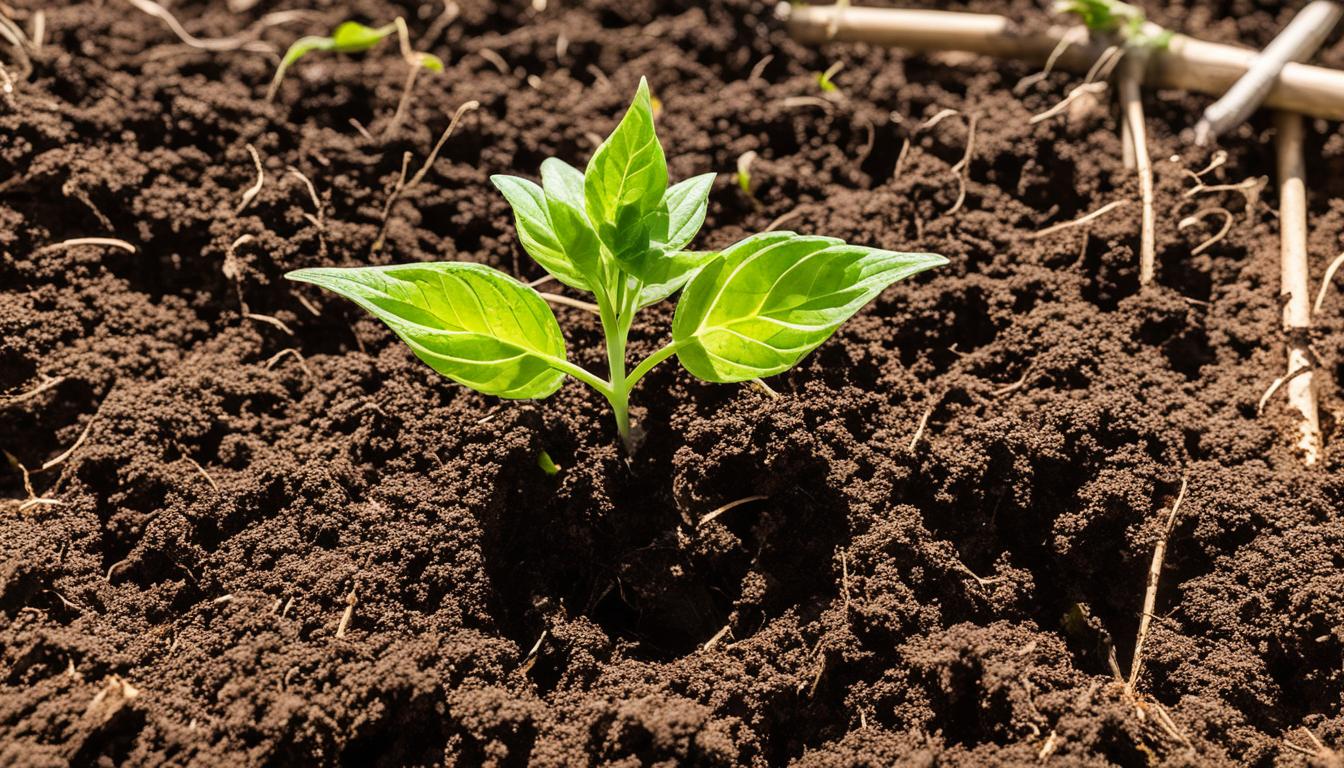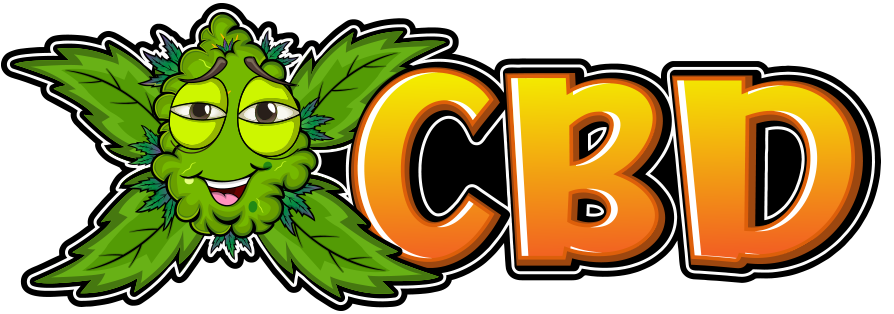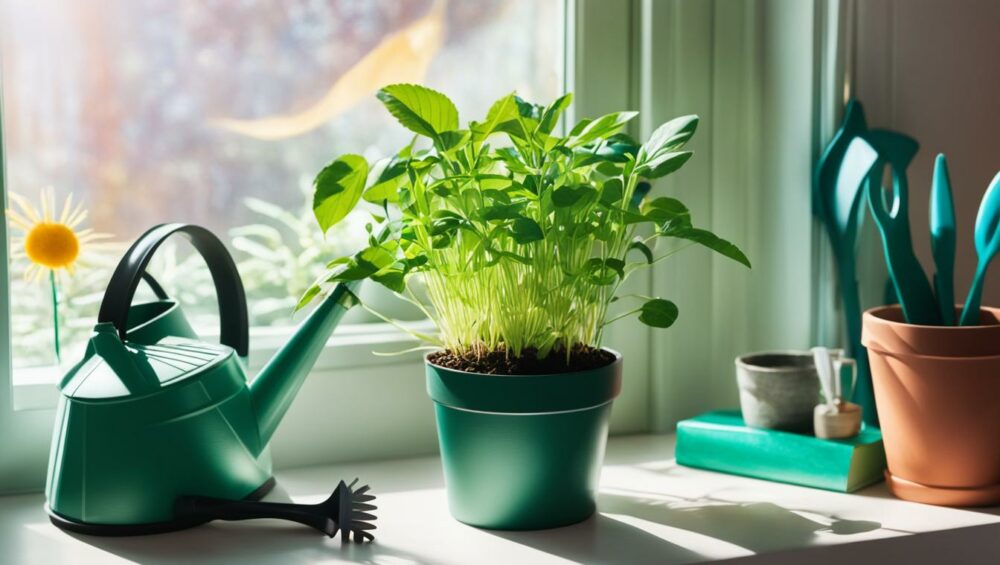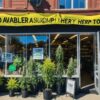Welcome to our comprehensive guide on how to grow CBD flowers and cultivate CBD flowers right in the comfort of your own home. Whether you’re a seasoned gardener or a novice enthusiast, this step-by-step tutorial will equip you with the knowledge and tools to successfully grow CBD flower at home and enjoy the therapeutic benefits of this remarkable plant.
Before we delve into the nitty-gritty of growing CBD flower at home, it’s important to understand the process and best practices involved. From germination to harvest, each stage requires careful attention to detail, but with the right guidance, you’ll be rewarded with a beautiful crop of CBD-rich flowers.
To start, it all begins with germinating hemp seeds indoors and nurturing them through the vegetative stage. Once the seedlings are strong enough, they can be transferred to your outdoor garden or a suitable grow space. Choosing the right conditions for CBD flower growth is crucial, so be sure to provide well-drained soil with plenty of organic material to promote healthy plant development.
Throughout the growing cycle, it’s important to monitor your plants’ progress, remove any male plants to allow the females to flourish, and provide adequate water and nutrients. After around 100 days, the time will come to harvest your CBD flowers. Properly drying and curing them ensures optimal flavor and potency.
We understand that starting your home-grown CBD flower journey can be both exciting and challenging. That’s why we’re here to guide you every step of the way. So, let’s get our hands dirty together and discover the art of cultivating your own CBD flowers.
The Best Conditions for CBD Flower Growth
CBD flowers require specific conditions to thrive and achieve optimal growth. Creating the right environment for your CBD plants will ensure healthy development and maximize the production of high-quality flowers. Here are the key factors to consider when cultivating CBD flower:
1. Soil Conditions
The soil plays a crucial role in CBD flower growth. CBD flowers thrive in well-drained soil that is rich in organic material. It is important to avoid overly wet or weedy soil, as it can hinder proper root development and lead to nutrient deficiencies. Prepare your garden by ensuring the soil is adequately drained, fertile, and free from weeds before planting your hemp seeds or seedlings.
2. Planting Time
Choosing the right time to plant your CBD flowers is essential for their success. Start planting your hemp seeds or seedlings after the final frost, when the outside temperature is around 50 degrees Fahrenheit (10 degrees Celsius). This timing will help protect your plants from temperature fluctuations and ensure they have the best chance of establishing healthy roots.
3. Watering
Consistent and appropriate watering is crucial during the first six weeks of CBD flower growth. Hemp plants require sufficient moisture to establish strong roots and promote overall growth. However, it’s important to avoid overwatering, as excessive moisture can lead to root rot and other diseases. Monitor the soil moisture levels and adjust your watering schedule accordingly.
4. Light Exposure
Provide your CBD plants with ample light exposure to support their growth and flower production. Hemp plants thrive in full sun or bright, indirect light. If growing indoors, ensure your plants receive around 18 hours of light per day during the vegetative stage. During the flowering stage, reduce the light exposure to 12 hours per day to initiate and maintain flower development.
5. Nutrients
Proper nutrition is essential for CBD flower growth. Ensure your plants receive a balanced supply of essential nutrients, including nitrogen, phosphorus, and potassium. Organic fertilizers or compost can be used to enrich the soil and provide a steady release of nutrients. Regularly monitor your plants for any signs of nutrient deficiencies and adjust your fertilization plan accordingly.
By creating the optimal conditions for CBD flower growth, you can ensure bountiful harvests of high-quality CBD flowers. Remember to monitor your plants closely, address any issues promptly, and provide the care and attention they need throughout their growing cycle.
The Process of Growing CBD Flower
CBD flower, derived from female hemp plants, is known for its high concentration of cannabinoids (CBD) and resin. To produce CBD flower with significant CBD and minimal THC, farmers employ selective breeding techniques with hemp seeds. Once the hemp plants reach full bloom, they can be harvested, dried, and cured to preserve their quality. Scotch Valley Ranch is renowned for producing CBD flower with exceptional CBD content and low THC levels.
To better understand the process of growing CBD flower, let’s delve into the growing cycle:
1. Germination and Seedling Stage
Begin by germinating the hemp seeds indoors, providing them with a suitable environment to sprout and develop strong taproots. This stage typically takes 5 to 10 days. Once the seedlings emerge, transfer them to larger containers and expose them to light for healthy vegetative growth.
2. Vegetative Stage
In the vegetative stage, hemp plants focus on leaf and stem production. Provide ample light, water, and nutrients to promote healthy growth. Monitor the plants closely, ensuring they receive adequate spacing and ventilation to prevent mold or disease. This stage typically lasts around 4 to 6 weeks.
3. Flowering Stage
During the flowering stage, the plants transition to producing flower buds rich in CBD. Adjust the light cycle to stimulate flowering, usually by reducing the amount of light exposure the plants receive each day. Temperature and humidity control during this stage are crucial to maintain optimal conditions for CBD development.
4. Harvesting
Once the hemp plants have reached full bloom, it’s time to harvest the CBD flowers. Depending on the specific strain, this typically occurs around 100 days after germination. Use sharp shears to cut the flowers carefully, ensuring minimal damage to the buds.
5. Drying and Curing
After harvesting, it’s essential to dry and cure the CBD flowers properly. Hang the flowers upside down in a well-ventilated area with low humidity for around 10-14 days. This process helps remove excess moisture and enhance the flavor and potency of the CBD flower.

By following the appropriate growing cycle, farmers can produce high-quality CBD flowers that showcase the full potential of the plant’s cannabinoid profile. Understanding each stage of the process is crucial to achieve the desired outcomes when cultivating CBD flower at home.
Growing CBD Flower Indoors vs. Outdoors
When it comes to cultivating CBD flower, there are two primary options: growing indoors or outdoors. Each method has its advantages and considerations. Let’s explore the benefits and challenges of each approach to help you decide which one suits your needs.
Growing CBD Flower Indoors
Growing CBD flower indoors offers several advantages. One major benefit is the ability to have full control over the plant’s environment. Indoor cultivation allows you to regulate temperature, humidity, lighting, and other factors that influence plant growth and flowering. With precise control, you can create optimal conditions that result in high-quality, potent, and visually appealing CBD flower.
“Indoor-grown cannabis tends to be more potent, tastier, and visually appealing.”
However, it’s important to note that growing CBD flower indoors requires patience, expertise, and investment. You will need to set up a suitable indoor growing space with proper ventilation, lighting systems, and other necessary equipment. Additionally, maintaining the right moisture levels and preventing pests can be more challenging indoors. Nonetheless, with dedication and knowledge, indoor cultivation can yield impressive results.
Growing CBD Flower Outdoors
Growing CBD flower outdoors has its own set of advantages and considerations. When cultivating CBD flower outdoors, you benefit from the natural environment, including natural sunlight, fresh air, and increased space for the plants to grow. Outdoor-grown CBD flower can have a unique terpene profile and a more natural flavor.
However, outdoor cultivation also comes with potential challenges. The quality of outdoor-grown CBD flower might vary due to unpredictable weather conditions, exposure to environmental toxins, and potential pests. Therefore, it’s essential to carefully select a suitable location with well-drained soil and consider protective measures against pests and harsh weather events.
| Factors | Growing CBD Flower Indoors | Growing CBD Flower Outdoors |
|---|---|---|
| Control over environment | High | Low |
| Quality and potency | High | Variable |
| Flavor and terpene profile | Customizable | Natural |
| Expertise required | High | Moderate |
| Setup and maintenance cost | High | Moderate |
Considering these factors, it’s important to choose the method of cultivation that aligns with your resources, goals, and expertise.
Whether you opt for the controlled environment of indoor cultivation or embrace the natural elements of outdoor growing, both methods offer unique opportunities to cultivate CBD flower. With proper care, attention to detail, and a passion for hemp cultivation, you can enjoy the rewards of growing your own CBD flower – be it indoors or outdoors.
The Challenges of Growing Hemp
Growing hemp can present several challenges that require careful attention and expertise. The sensitivity of hemp plants to environmental conditions is one such challenge. Specific temperatures, humidity levels, and photoperiods are essential for promoting proper growth and flowering.
In addition to environmental factors, there are other difficulties that hemp growers may face. One such risk is hermaphroditism, where hemp plants develop both male and female reproductive organs, leading to reduced yields and decreased quality of CBD flowers. Another challenge is the threat of mold, which can negatively impact crop health and yield.
Pests, such as aphids, mites, and caterpillars, can also pose a significant threat to hemp cultivation. These pests can damage the plants, inhibit growth, and reduce the overall CBD content of the flowers.
Furthermore, the process of growing hemp can incur high energy and material costs. Maintaining the optimal conditions necessary for hemp growth, including lighting and climate control systems, can be expensive. Additionally, the lack of knowledge and experience in hemp cultivation can lead to lost value and decreased profitability.
“Growing hemp requires meticulous attention to detail and a deep understanding of the plant’s needs. It is essential to establish proper systems for pest management, mold prevention, and environmental control to ensure a successful harvest.”
Despite the challenges, hemp cultivation offers numerous benefits and opportunities for those willing to navigate these difficulties. With proper planning, expertise, and the implementation of best practices, hemp growers can overcome these obstacles and enjoy the rewards of a thriving CBD flower crop.
Challenges of Growing Hemp
| Challenges | Impact |
|---|---|
| Hermaphroditism | Reduced yields and decreased quality of CBD flowers |
| Mold | Negative impact on crop health and yield |
| Pests | Damaged plants, inhibited growth, and decreased CBD content |
| High energy and material costs | Expense associated with maintaining optimal growing conditions |
| Lack of knowledge and experience | Lost value and decreased profitability |
Growing Hemp Indoors
Indoor hemp growing offers a range of advantages for cultivators, allowing for precise control over the environmental conditions and resulting in high-quality plant growth and CBD production. When cultivating hemp indoors, it is essential to create the ideal growing environment to ensure the plants thrive.
Providing Optimal Environmental Conditions
Temperature, humidity, and lighting play crucial roles in the successful cultivation of hemp indoors. Maintaining a consistent temperature between 70-78°F (21-25°C) ensures optimal growth and prevents stress on the plants. Controlling humidity levels, ideally between 40-60%, helps prevent mold and mildew formation.
Lighting is of utmost importance when growing hemp indoors as it impacts the plant’s growth and flowering. Full-spectrum LED lights are recommended for their energy efficiency and ability to provide the necessary spectrum for both vegetative and flowering stages. Adjusting the light cycle to 18-24 hours of light during the vegetative stage and 12 hours of light during the flowering stage triggers the transition between growth phases.
Germinating Seeds and Caring for Seedlings
To start the indoor hemp growing process, germinate the hemp seeds by placing them in a damp paper towel or using a germination kit. Once the seeds have sprouted, carefully transfer them to small pots or containers filled with a well-draining soil mixture.
For the seedlings to develop properly, maintain consistent moisture in the soil without overwatering, as hemp plants are susceptible to root rot. Gradually increase the amount of light and adjust the distance between the plants and the light source to avoid light burn.
Vegetative and Flowering Growth Stages
As the seedlings grow, they will enter the vegetative stage, characterized by the development of leaves and stems. During this phase, provide the plants with a balanced nutrient solution rich in nitrogen to promote healthy growth.
After a few weeks in the vegetative stage, it is time to transition the hemp plants to the flowering stage. Adjust the light cycle to 12 hours of light and 12 hours of uninterrupted darkness, simulating the natural change in photoperiod that triggers flowering. It is crucial to monitor the plants closely during this phase to ensure optimal growth and flowering.
Managing Plant Growth and Quality
Indoor hemp growing allows cultivators to closely monitor and manage plant growth and quality throughout the cultivation process. By adjusting environmental factors, such as light intensity, temperature, and nutrient levels, growers can optimize CBD production and enhance the desired characteristics of the plants.
Regularly inspect the plants for signs of pests or disease, ensuring immediate action is taken to prevent any potential damage. Implementing a comprehensive monitoring and maintenance routine will help promote healthy growth and ultimately lead to a successful indoor hemp harvest.
| Advantages of Growing Hemp Indoors | Challenges of Growing Hemp Indoors |
|---|---|
| 1. Greater control over environmental conditions. | 1. Higher energy costs for lighting and climate control. |
| 2. Higher potency, better taste, and appearance of CBD flowers. | 2. The need for expertise in indoor cultivation techniques. |
| 3. Year-round cultivation possible regardless of outdoor climate. | 3. Limited space for plant growth and expansion. |
| 4. Reduced risk of pests and diseases compared to outdoor cultivation. | 4. Higher initial investment for indoor growing equipment. |
Understanding Hemp and Cannabis Terminology
Hemp and marijuana are two distinct classifications within the cannabis plant family. Hemp refers to cannabis plants and products that contain less than 0.3% THC (tetrahydrocannabinol), the psychoactive compound responsible for the ‘high’ associated with marijuana. On the other hand, marijuana is characterized by its higher THC content, typically exceeding 0.3%.
Cannabis plants are dioecious, meaning they possess separate male and female flowers. When it comes to CBD flower production, female hemp plants are favored. These plants dedicate their energy to developing the cannabinoid-rich flower buds, which contain CBD and resin. Male hemp plants, on the other hand, are often utilized for fiber harvesting or seed production purposes.
One crucial aspect of hemp cultivation is understanding the differences in THC levels and plant genetics. While hemp has low THC levels, it is rich in CBD, making it desirable for various applications. By selecting and breeding hemp varieties with high CBD and minimal THC content, farmers can ensure the production of CBD-rich flowers that comply with legal regulations.
When engaging in hemp cultivation, it is vital to differentiate between hemp and marijuana and comprehend the value of male and female plants. Understanding the levels of THC in hemp varieties and correctly identifying the plant genetics enables growers to optimize their CBD flower production and harness the many benefits of hemp cultivation.
FAQ
How do I grow CBD flower at home?
To grow CBD flower, start by germinating hemp seeds indoors and then transitioning the seedlings to the vegetative stage. Plant the hemp plants outside in well-drained soil with rich organic material. Remove male plants to allow the female plants to focus their energy on producing flowers. Harvest the CBD flowers after about 100 days and proceed to dry and cure them.
What are the best conditions for CBD flower growth?
CBD flowers thrive in areas with well-drained soil that is rich in organic material. The soil should not be too wet or weedy. The best time to plant hemp is after the final frost, when the outside temperature is around 50 degrees Fahrenheit. During the first six weeks, hemp plants should be watered consistently to ensure proper growth.
What is CBD flower?
CBD flower refers to the female hemp plant that produces the flower bud secreting cannabinoids (CBD) and resin. Farmers selectively breed hemp seeds to yield a significant amount of CBD and a minimal amount of THC. Once the hemp plants reach full bloom, they are ready for harvesting, drying, and curing. Scotch Valley Ranch produces CBD flower with high CBD content and low THC levels.
Should I grow CBD flower indoors or outdoors?
Growing CBD flower indoors allows for better control over the plant’s growth and flowering. Indoor-grown cannabis tends to be more potent, tastier, and visually appealing. However, growing CBD flower indoors requires patience and expertise. On the other hand, outdoor-grown CBD flower may have lower quality buds and can be more susceptible to environmental toxins.
What are the challenges of growing hemp?
Growing hemp can be challenging due to its sensitivity to environmental conditions. Hemp plants require specific temperatures, humidity levels, and photoperiods for proper growth and flowering. Additionally, there are risks of hermaphroditism, mold, pests, high energy and materials costs, and lost value due to lack of knowledge. Starting out in hemp cultivation can be risky, and it requires careful attention and expertise.
How do I grow hemp indoors?
When growing hemp indoors, it is crucial to provide the right environmental conditions, including temperature, humidity, and lighting. Germinate hemp seeds and care for the seedlings until they are ready for transplantation. Adjust the light cycle to trigger flowering and provide proper nutrients to support vegetative and flowering growth stages. Growing hemp indoors allows for better management of plant growth and quality.
What is the difference between hemp and marijuana?
Hemp is classified as cannabis plants and products that contain less than 0.3% THC, while marijuana refers to cannabis with THC content higher than 0.3%. Cannabis plants are dioecious, meaning male and female flowers grow on separate plants. Female hemp plants are preferred for CBD flower production, while male plants can be used for fiber harvesting or seed production. It is important to understand the differences in THC levels and plant genetics when growing hemp.







